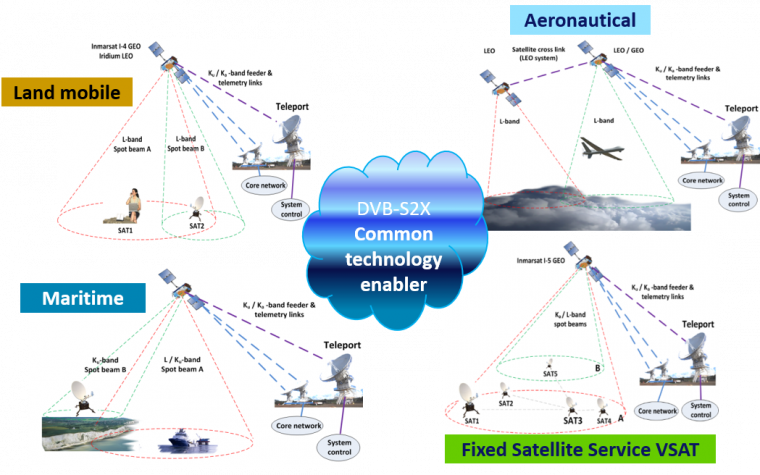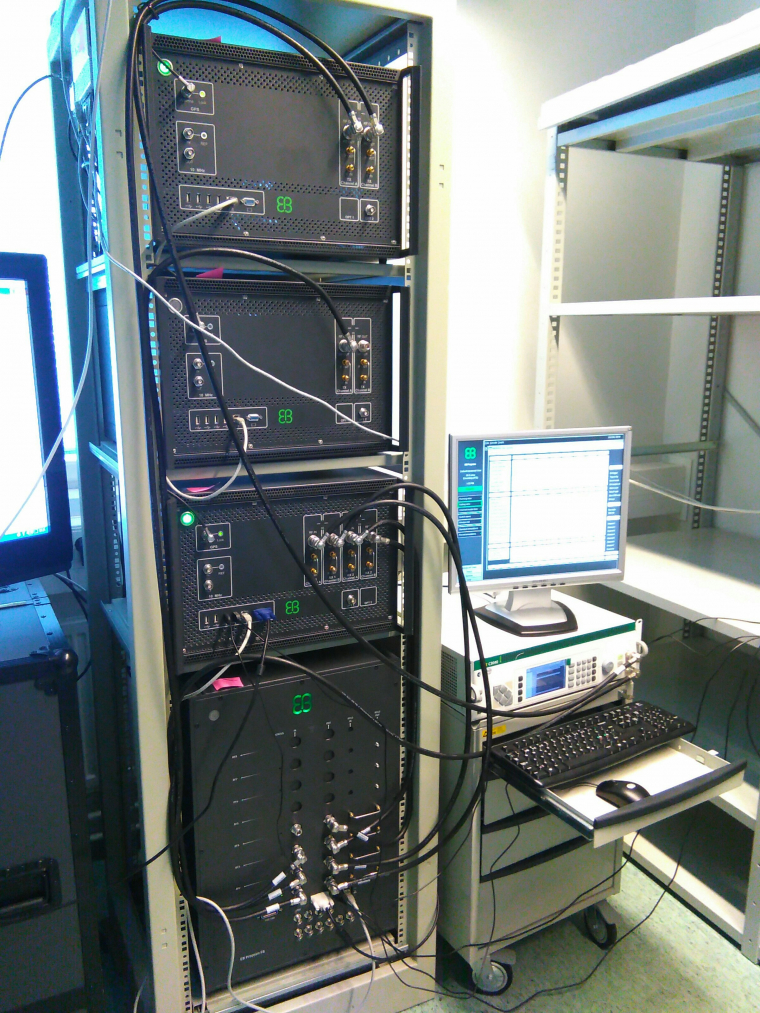-
StatusCompleted
-
Status date2017-06-30
-
Activity Code6-.016
The objective of this project is to design a hardware (HW) demonstrator providing a reference design based on the DVB-S2X standard suitable for emerging markets. To this purpose, relevant fixed and mobile scenarios such as fixed VSAT, land mobile, maritime, and aeronautical services have been identified. Also, advanced physical layer (PHY) techniques have been investigated in order to deal with the peculiarities of the chosen scenarios and guarantee reliable communications even in very low signal-to-noise ratio (SNR) regime. The final design includes all the realistic satellite system impairments and the corresponding compensation algorithms, and is verified by means of software (SW) simulations and HW measurements.

The first challenge was the identification of scenarios and applications that could be relevant for emerging markets. The selected scenarios came with peculiarities such as mobility, fading, and high noise level requiring a proper system design. The second challenge was therefore the identification of suitable techniques able to cope with the limits of the implementation and the conditions imposed by the scenarios. The combination of scenario-related and implementation -related constraints led the successive investigation of PHY techniques, especially concerning the design of a synchronization chain operating at very low SNRs.
The proposed transmitter-receiver design is targeted for both fixed and mobile satellite service scenarios. Overall, our HW demonstrator is able to operate in a wide SNR range, going down to -6 dB. Experimental measurements also show that Doppler shifts, deep fading and a time drift up to 100 ppm can be tolerated by the designed synchronization chain. The capability to operate at very low SNRs and the robustness to implementation and channel impairments make the designed testbed an attractive design for professional and commercial equipment targeting not only GEO services, but also MEO/LEO satellite applications as well.
The self-synchronizing convolutional channel interleaver provides a significant gain in mobile channels affected by deep fading, without requiring any extra signaling at the receiver. In addition to this, signal predistortion reduces the impact of the nonlinear distortion caused by the transponder amplifier. In order to be easily implementable in HW, the signal predistortion has been converted into a look-up table. Finally, the adoption of super-frame format #3 according to Annex E of the DVB-S2X standard facilitates the synchronization at low SNRs and in presence of a high timing drift being typical of cheap equipment.
The overall test system includes all the key functionalities required by the DVB-S2X standard. The receiver only knows whether the data is organized according to the normal S2 frame or the super-frame format #3. The investigated PHY techniques (i.e., the LUT-based signal predistortion and the convolutional channel interleaver) can be switched on or off. The test bed includes the EB-RACE SDR platform, a Propsim F8 Radio Channel emulator, and the IZT C3040 satellite link emulator. The system control is implemented by a MATLAB script that has access to the waveform registers and can control the Propsim and the satellite link emulator through an Ethernet connection. The testbed consists of Xilinx Virtex 6 family LX240T FPGAs for waveform development with a design wrapper. The BCH/LDPC-decoder is an IP-block from Fraunhofer IIS. The waveform generator supports ACM and VCM. When ACM is selected, it can adapt the waveform to the SNR variations by choosing the appropriate MODCOD according to the measured SNR. When using VCM, there can be two individual data streams with different MODCODs. FER and data rate are measured for testing.

The project has 2 phases: Phase 1 aims at defining new potential use cases and studying novel PHY techniques in the identified scenarios, while Phase 2 is focused on the implementation of a HW demonstrator. In Phase 1, the most promising algorithms are verified by means of SW simulations, and only the selected ones are integrated in HW during Phase 2. Finally, an extensive measurement campaign is carried out in a laboratory environment to verify the proposed techniques in the selected scenarios.
The project has been completed and a demonstrator was produced, showing that DVB-S2X can be a common technology enabler for land-mobile, aeronautical, and maritime satellite scenarios, as well as for the fixed VSAT. The proposed design implements not only S2X features such as super-frame format #3 but also advanced PHY techniques namely; signal predistortion and convolutional channel interleaving. The testbed includes all the realistic satellite system impairments and can operate at very low SNRs, Doppler shift, and deep fading being typical for mobile scenarios. This makes the proposed system attractive for further development towards commercial equipment and GEO/MEO/LEO satellite applications.



